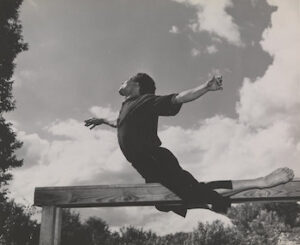
Talley Beatty
*Talley Beatty was born on this date in 1918. He was a Black dancer and choreographer.
Talley Beatty was born in Cedar Grove, Louisiana, a section of Shreveport, but grew up in Chicago, Illinois. At the age of fourteen, he began studying dance with Katherine Dunham. He learned her style of dancing, which was heavily based on her African and Caribbean studies of dance in the West Indies. He was a part of Dunham’s company and performed in several shows with them.
He also trained under Martha Graham in the 1940s. He left the Dunham troupe in 1946 to continue his studies in New York City. He took ballet lessons in New York, but because he was Black, he was forced to attend dance classes in the early mornings or late nights in a dressing room while classes were going on in an adjacent studio.
After studying under Dunham and Martha Graham, Beatty went on to solo work and choreograph his works, which centered on African Americans' social issues, experiences, and everyday life. Beatty and his technique and dancing style were praised and criticized by critics and dancers of his day. Beatty continued his work as a solo artist and choreographer. He explored a variety of different dance roles and styles.
He appeared in films such as A Study in Choreography for Camera (1945) and stage shows such as Inside U.S.A. (1948). He danced in Broadway musicals such as Cabin in the Sky. He was nominated for a Tony Award in 1977 for choreography for the Broadway show Your Arms Too Short to Box with God (1976). He also danced in nightclubs, in musical theater, and on the concert stage. He also did a minstrel ballet titled Blackface. Beatty also choreographed for various choreographers, including Ruth Page, Lew Christiansen, George Balanchine, and Syvilla Fort. He choreographed over fifty ballets and did work in America and Europe.
Many dancers and critics described Beatty’s dance style as a mix between jazz and ballet. “His self-described style is a mixture of Graham connective steps, Dunham technique, and a little ballet with Louisiana hot sauce on it.” His choreography is also described as “fast, exuberant, [and] explosive,” Beatty explored movement that extended outward from the extremities, such as leg extensions and back arches. Dancers in the documentary film Talley Beatty: Conversations with Contemporary Masters of American Modern Dance state that his choreography is physically demanding and technically challenging and that to dance in one of his works, strong knowledge in at least four different disciplines, including ballet and modern dance, is needed.
John Martin, a white dance critic during the early to mid-1900s, criticized Beatty’s dance style as too much ballet. During this time, when there was much racism and stereotyping, ballet was considered a “high art” reserved for white dancers. Other critics, such as Margaret Lloyd, praised Beatty's technique in her work The Borzoi Book of Modern Dance. Lloyd wrote that she found his leaps “phenomenal, a sort of universal wish fulfillment to navigate the air.”
Beatty’s work explored themes related to African Americans' struggles and everyday lives. Many of his pieces focused on his “personal statements about alienation, racial discrimination, and the hardships of urban life.” In the film Conversations with Contemporary Masters of American Modern Dance, Beatty discusses some of his more well-known choreographic works.
According to Beatty Southern Landscape, a five-part dance describes the time right after Reconstruction in the South. The dance explores a historical event described in Howard Fast's novel Freedom Road. The plot centers around a group of black and white farmers who had happily formed a community together before being destroyed by the Ku Klux Klan. After the slaughter, people went into the fields at night to retrieve the bodies of their loved ones. The dance's most well-known and famous solo section, titled Mourner’s Bench, is about a man returning from recovering a body and reflecting on the ideas of hope and strength.
He is considered one of the greatest Black choreographers and assumes the titles of dancer, doctor, and dance company director. Talley Beatty died on April 29, 1995.